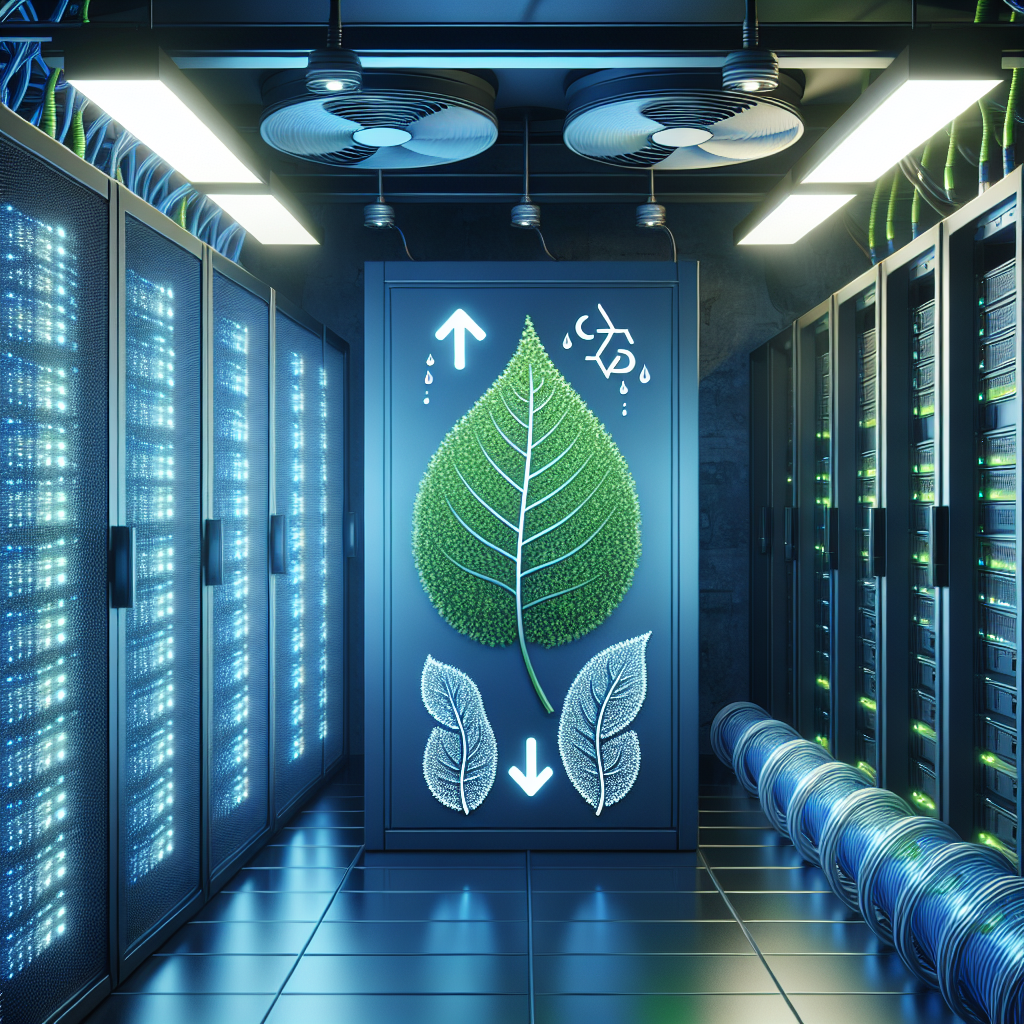Your cart is currently empty!
Tag: Footprint
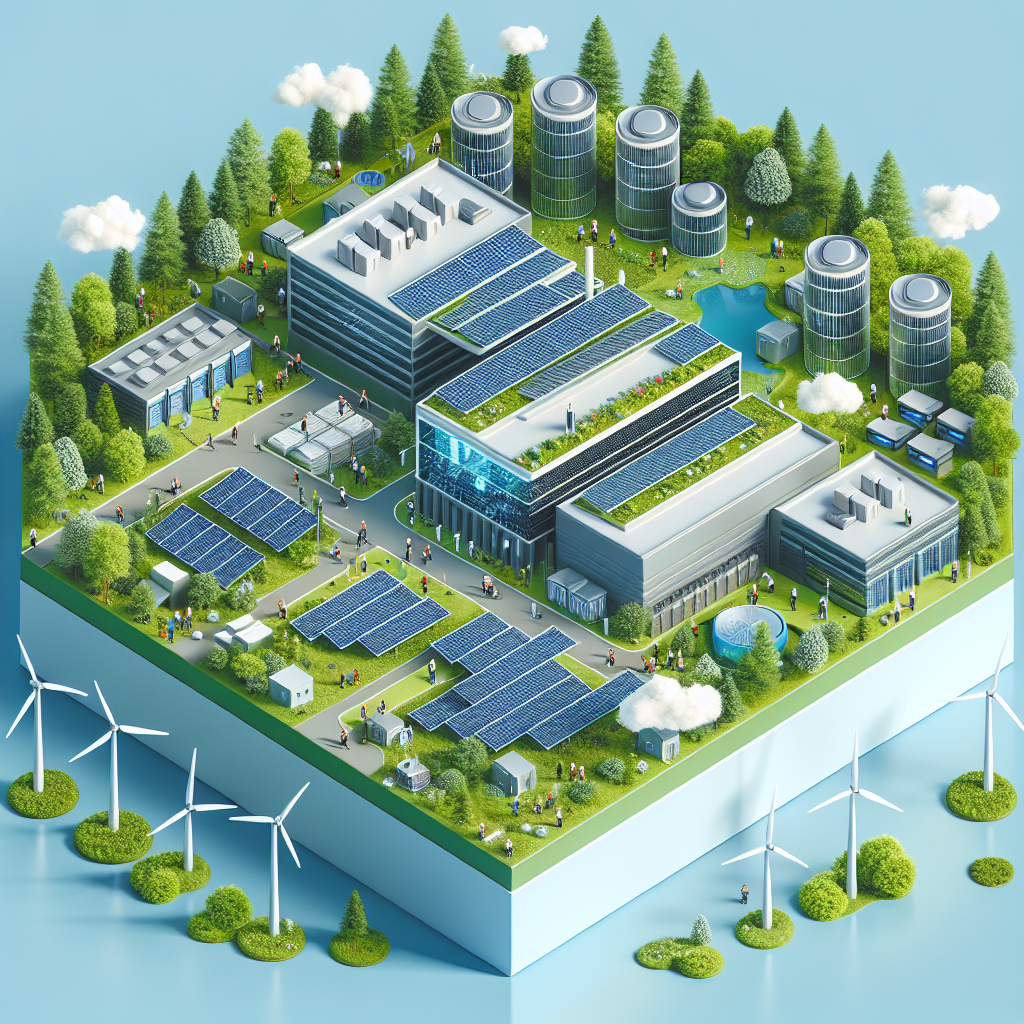
The Future of Data Center Sustainability: How Companies are Reducing Their Environmental Footprint
In recent years, there has been a growing concern over the environmental impact of data centers. These facilities, which house the servers and equipment that power the internet and store vast amounts of data, consume massive amounts of energy and produce significant amounts of carbon emissions. As the demand for data storage and processing continues to grow, so too does the need for more sustainable practices in the data center industry.Fortunately, many companies are now taking steps to reduce their environmental footprint and make their data centers more sustainable. One of the most common ways that companies are achieving this is by increasing the energy efficiency of their data centers. This can involve upgrading equipment and infrastructure to be more energy-efficient, implementing virtualization technologies to consolidate servers and reduce power consumption, and using renewable energy sources such as solar or wind power to power their data centers.
Another key strategy that companies are using to reduce their environmental impact is by implementing water conservation measures in their data centers. Data centers require large amounts of water for cooling purposes, and by implementing more efficient cooling systems and recycling water, companies can significantly reduce their water usage and lessen their impact on local water resources.
In addition to energy and water conservation measures, companies are also looking at ways to reduce the amount of waste generated by their data centers. This can involve recycling old equipment, using more environmentally friendly materials in construction and equipment, and implementing waste reduction and recycling programs.
Overall, the future of data center sustainability looks promising as more companies are realizing the importance of reducing their environmental impact and are taking concrete steps to make their data centers more sustainable. By implementing energy efficiency measures, conserving water, and reducing waste, companies can not only reduce their environmental footprint but also save money on operating costs in the long run. With the continued focus on sustainability in the data center industry, we can expect to see even more innovative and effective solutions emerge in the coming years.
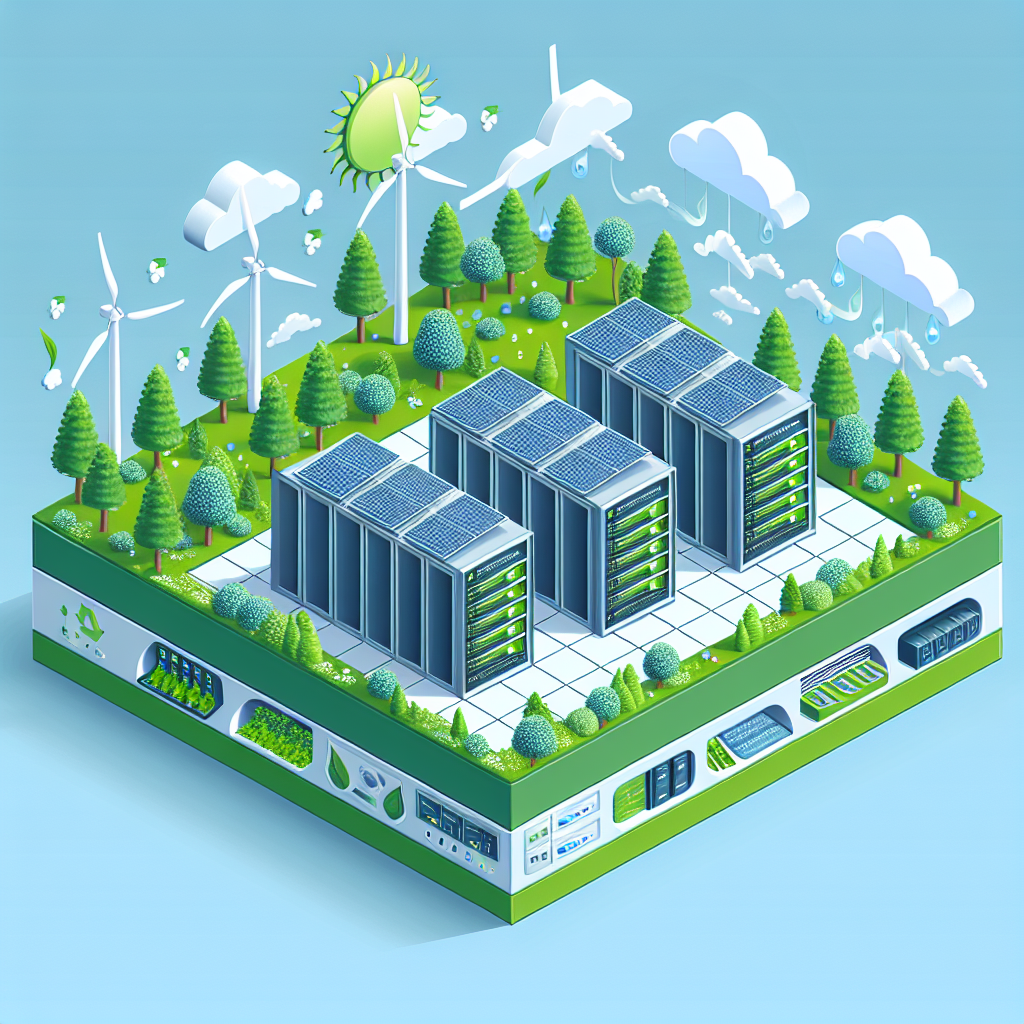
Reducing Costs and Carbon Footprint with Sustainable Data Center Cooling
Data centers are a vital component of our modern digital world, serving as the backbone for countless online services and applications. However, these facilities also come with a hefty price tag in terms of both financial costs and environmental impact. One of the biggest challenges facing data center operators is how to efficiently cool these facilities while simultaneously reducing costs and minimizing their carbon footprint.Traditional data center cooling methods, such as air conditioning units and chillers, can be energy-intensive and expensive to operate. In fact, cooling can account for up to 40% of a data center’s total energy consumption. This not only drives up operational costs but also contributes to a significant carbon footprint, as the electricity used to power these cooling systems often comes from fossil fuels.
To address these challenges, many data center operators are turning to sustainable cooling solutions that are not only more cost-effective but also environmentally friendly. One such solution is the use of free cooling technologies, which leverage the natural cooling properties of the environment to regulate temperatures within the data center.
Free cooling systems work by using ambient air or water to cool the data center, eliminating the need for traditional cooling methods that rely on mechanical refrigeration. This can significantly reduce energy consumption and lower operating costs, as well as decrease the facility’s carbon emissions. In some cases, free cooling systems can result in energy savings of up to 30% or more.
Another sustainable cooling option for data centers is the use of liquid cooling technologies, which involve circulating a liquid coolant directly through the servers and other IT equipment to dissipate heat. This method can be more efficient than traditional air cooling systems and can help reduce energy consumption and operational costs.
In addition to implementing sustainable cooling technologies, data center operators can also take steps to improve the overall efficiency of their facilities. This includes optimizing airflow management, implementing hot aisle/cold aisle containment systems, and utilizing energy-efficient hardware and equipment.
By reducing costs and carbon footprint with sustainable data center cooling solutions, operators can not only save money and reduce their environmental impact but also improve the overall reliability and performance of their facilities. As the demand for data centers continues to grow, it is crucial that operators prioritize sustainability and energy efficiency to ensure a more sustainable future for the industry.
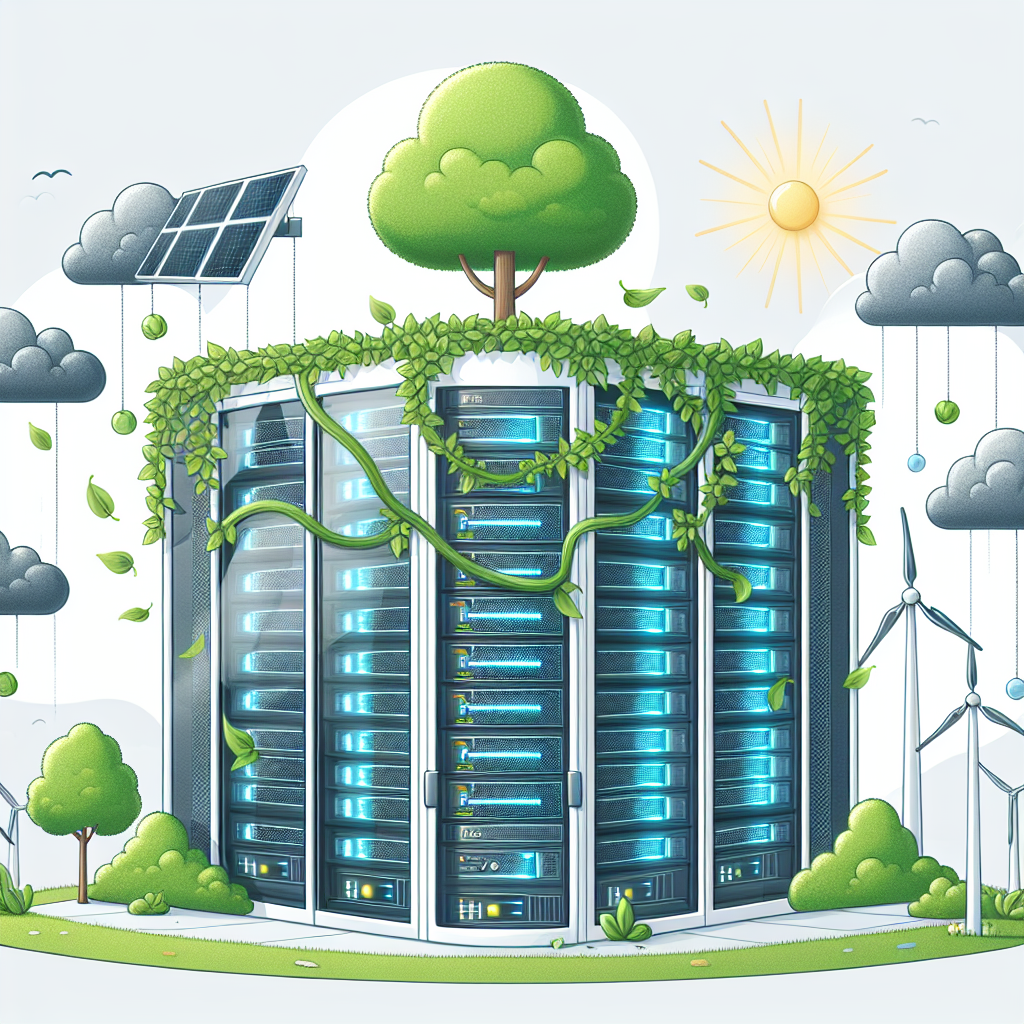
Eco-Friendly Solutions: How Data Centers are Reducing their Carbon Footprint
In recent years, the issue of climate change and environmental sustainability has become a top priority for businesses and individuals alike. As a result, many industries are looking for ways to reduce their carbon footprint and adopt more eco-friendly practices. One industry that has made significant strides in this area is the data center industry.Data centers are essential for the functioning of the modern digital world, as they store and process the vast amounts of data that are generated every day. However, the energy consumption of data centers has been a cause for concern, as they require large amounts of electricity to power their servers and cooling systems. In fact, data centers are estimated to account for 1-2% of global electricity consumption.
To address this issue, many data centers are implementing eco-friendly solutions to reduce their carbon footprint. One of the most common strategies is to increase energy efficiency through the use of advanced cooling systems, server virtualization, and energy-efficient hardware. By optimizing their operations, data centers can reduce their energy consumption and lower their carbon emissions.
Another eco-friendly solution that data centers are adopting is the use of renewable energy sources, such as solar or wind power. By generating their own clean energy on-site or purchasing renewable energy credits, data centers can significantly reduce their environmental impact and contribute to the transition to a low-carbon economy.
Furthermore, data centers are also exploring innovative technologies like liquid cooling and heat reuse to further improve their energy efficiency. Liquid cooling systems can significantly reduce the amount of energy needed for cooling, while heat reuse systems can capture and repurpose the waste heat generated by servers for heating buildings or water.
In addition to these technical solutions, data centers are also focusing on sustainable practices in their day-to-day operations. This includes recycling electronic waste, using energy-efficient lighting, and implementing green building designs to reduce their overall environmental impact.
Overall, data centers are making significant progress in reducing their carbon footprint and adopting more eco-friendly practices. By implementing energy-efficient technologies, utilizing renewable energy sources, and promoting sustainable operations, data centers are leading the way in creating a more sustainable and environmentally friendly digital infrastructure. As the demand for data continues to grow, it is crucial for data centers to continue their efforts to reduce their environmental impact and contribute to a greener future.
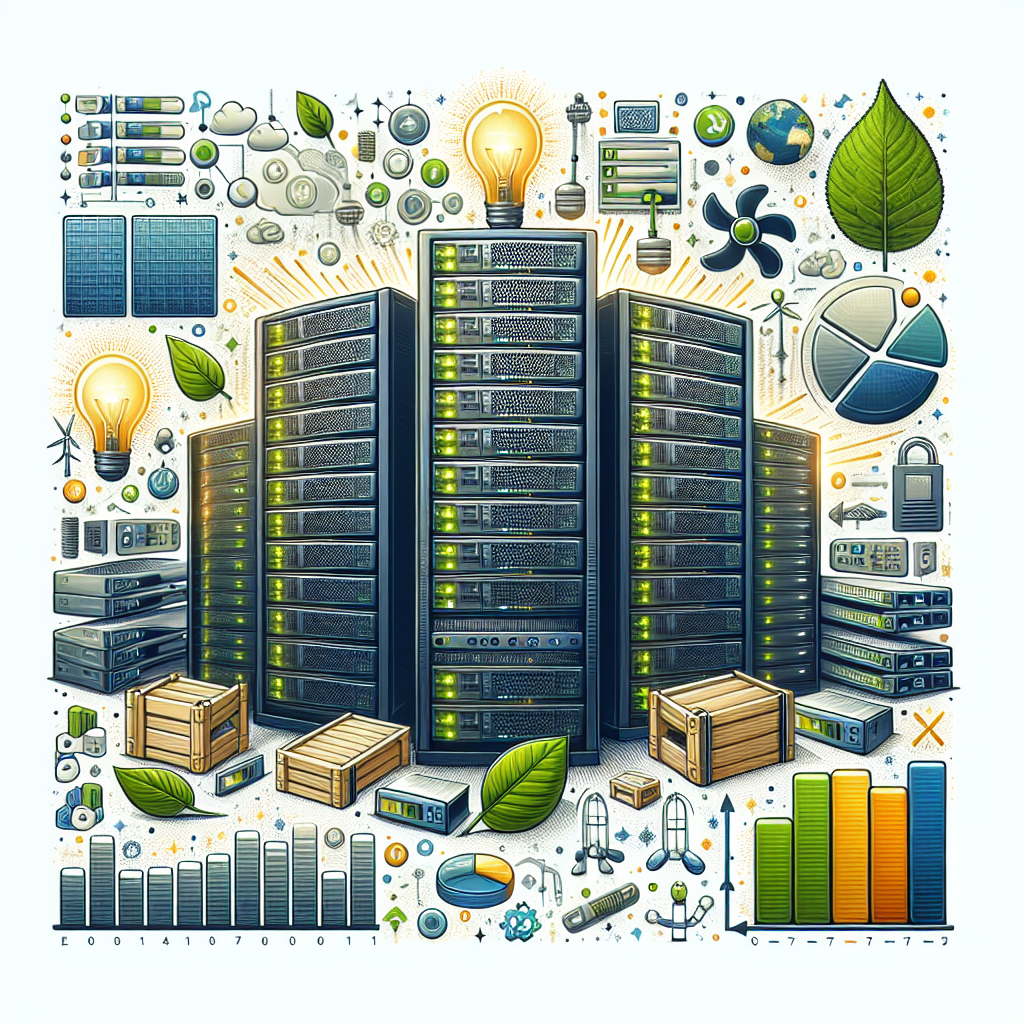
Cutting Costs and Reducing Carbon Footprint: How Data Centers Can Improve Energy Efficiency
Data centers play a crucial role in the modern digital economy, serving as the backbone of our online activities. However, they also consume a significant amount of energy, contributing to their carbon footprint. As the demand for data centers continues to grow, it is more important than ever to find ways to reduce their energy consumption and environmental impact.One of the key strategies for cutting costs and reducing carbon footprint in data centers is improving energy efficiency. By implementing energy-efficient practices and technologies, data centers can lower their operating costs, reduce their carbon emissions, and contribute to a more sustainable future.
There are several ways that data centers can improve energy efficiency. One of the most effective methods is optimizing cooling systems. Cooling accounts for a significant portion of a data center’s energy consumption, so by implementing more efficient cooling systems and airflow management techniques, data centers can reduce their energy usage and operating costs.
Another important factor in improving energy efficiency in data centers is virtualization. By consolidating servers and storage devices, data centers can decrease their overall energy consumption and improve resource utilization. Additionally, implementing energy-efficient hardware and equipment, such as energy-efficient servers and power distribution units, can further reduce energy usage and costs.
Monitoring and analyzing data center energy usage is also critical for improving energy efficiency. By collecting and analyzing data on power usage, temperature, and airflow, data center operators can identify areas of inefficiency and implement targeted solutions to optimize energy usage.
In addition to improving energy efficiency, data centers can also reduce their carbon footprint by investing in renewable energy sources. By sourcing electricity from renewable sources such as solar or wind power, data centers can significantly reduce their environmental impact and contribute to a more sustainable energy grid.
Overall, cutting costs and reducing carbon footprint in data centers requires a comprehensive approach that includes implementing energy-efficient practices, optimizing cooling systems, virtualizing resources, and investing in renewable energy sources. By prioritizing energy efficiency and sustainability, data centers can not only lower their operating costs but also make a positive impact on the environment.
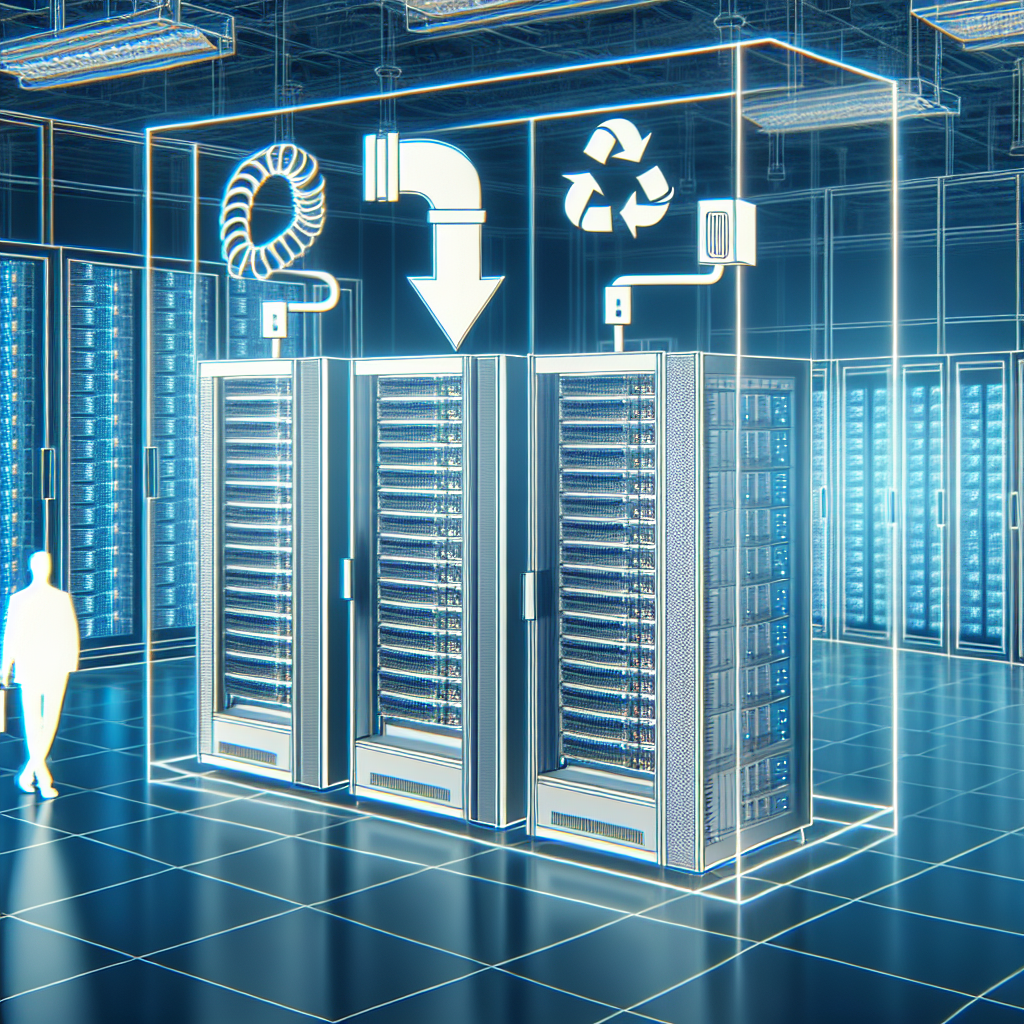
How Data Centers are Reducing Carbon Footprint Through HVAC Upgrades
Data centers play a crucial role in the digital age, serving as the backbone of the internet and housing the servers that store and process massive amounts of data. However, these data centers also consume a significant amount of energy, leading to a large carbon footprint. In recent years, data centers have been making efforts to reduce their environmental impact by upgrading their HVAC systems.HVAC systems are essential in data centers to maintain optimal temperatures for the servers and other equipment. These systems typically consume a large amount of energy, making them a major contributor to the carbon footprint of data centers. By upgrading their HVAC systems, data centers can significantly reduce their energy consumption and greenhouse gas emissions.
One way data centers are reducing their carbon footprint through HVAC upgrades is by implementing more energy-efficient technologies. This includes installing variable frequency drives (VFDs) on HVAC motors, which allow the motors to adjust their speed based on the cooling needs of the data center. This can lead to significant energy savings compared to traditional HVAC systems that run at a constant speed.
Another key strategy is improving the overall efficiency of the HVAC system through better insulation, airflow management, and maintenance practices. By ensuring that the HVAC system is operating at its peak efficiency, data centers can reduce their energy consumption and lower their carbon emissions.
Data centers are also exploring the use of renewable energy sources to power their HVAC systems. This includes installing solar panels or wind turbines on-site to generate clean energy for cooling the data center. By using renewable energy sources, data centers can further reduce their carbon footprint and lessen their reliance on fossil fuels.
In addition to these technological upgrades, data centers are also implementing innovative cooling strategies to reduce their energy consumption. This includes using outside air or water sources for cooling instead of relying solely on traditional HVAC systems. By harnessing natural cooling sources, data centers can significantly reduce their energy consumption and decrease their carbon emissions.
Overall, data centers are making significant strides in reducing their carbon footprint through HVAC upgrades. By implementing energy-efficient technologies, improving HVAC system efficiency, and exploring renewable energy sources, data centers are leading the way in sustainable operations. These efforts not only benefit the environment but also help data centers reduce their operating costs and improve their overall sustainability.
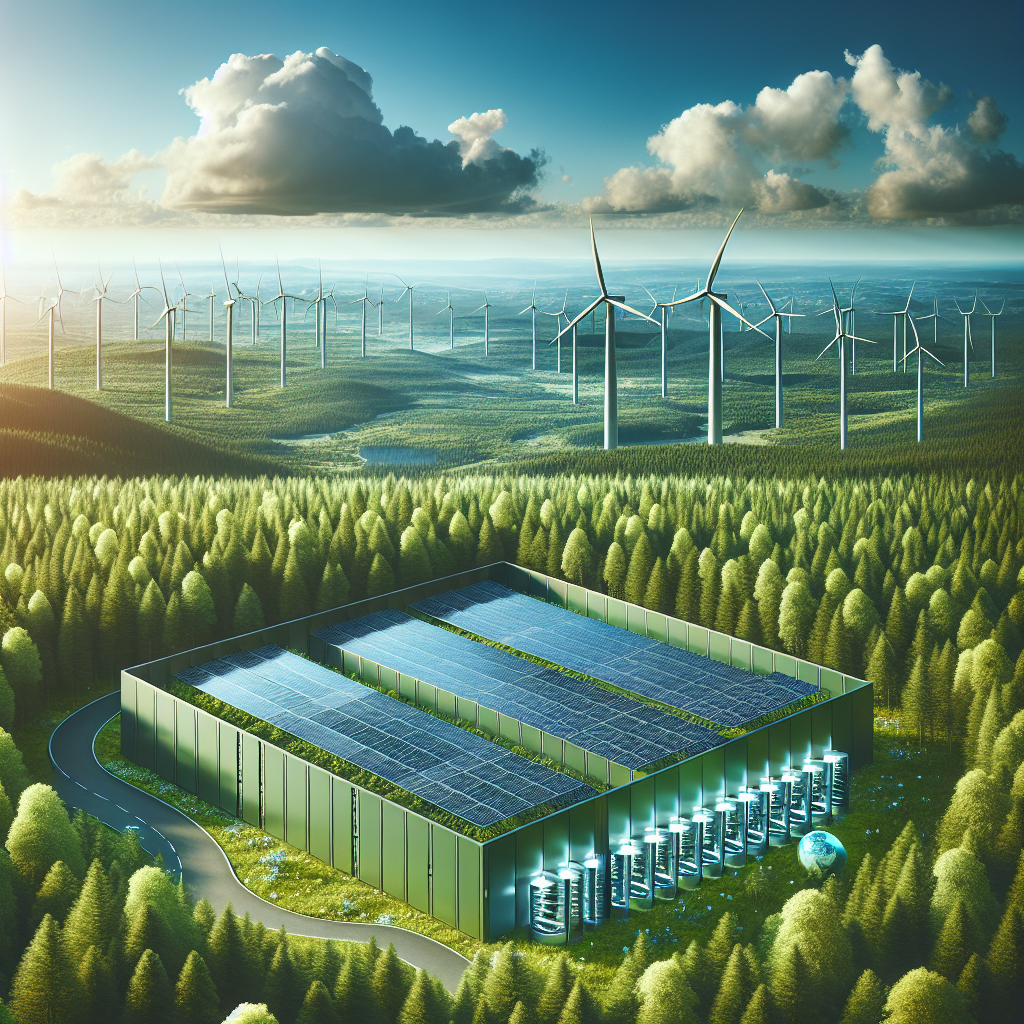
Reducing Carbon Footprint: The Role of Data Center Energy Efficiency
In today’s digital age, data centers play a crucial role in storing and processing vast amounts of information for businesses, governments, and individuals. However, the environmental impact of these data centers cannot be ignored. The energy consumption of data centers is substantial, and with the increasing demand for data storage and processing, their carbon footprint is only expected to grow.One of the key ways to reduce the carbon footprint of data centers is through improving energy efficiency. Data centers typically consume a significant amount of electricity to power servers, cooling systems, and other equipment. By implementing energy-efficient practices, data centers can reduce their energy consumption and, in turn, their carbon emissions.
One way to improve energy efficiency in data centers is through the use of virtualization. Virtualization allows multiple virtual servers to run on a single physical server, reducing the overall number of servers needed and therefore decreasing energy consumption. Additionally, using energy-efficient hardware, such as servers with high-efficiency power supplies and cooling systems, can also help reduce energy usage.
Another important factor in improving energy efficiency in data centers is proper temperature and airflow management. By optimizing the cooling systems and airflow within a data center, operators can ensure that servers are operating at their most efficient levels, reducing the overall energy consumption of the facility.
Furthermore, monitoring and managing energy usage in real-time can help data center operators identify areas of inefficiency and make adjustments to improve energy efficiency. By implementing energy management systems and using data analytics to track energy usage, data centers can better understand their energy consumption patterns and make informed decisions to reduce their carbon footprint.
In conclusion, reducing the carbon footprint of data centers is essential for mitigating the environmental impact of our digital infrastructure. By focusing on energy efficiency through practices such as virtualization, using energy-efficient hardware, optimizing temperature and airflow management, and monitoring energy usage, data centers can play a significant role in reducing their carbon emissions. As the demand for data storage and processing continues to grow, it is imperative that data center operators prioritize energy efficiency to minimize their environmental impact.
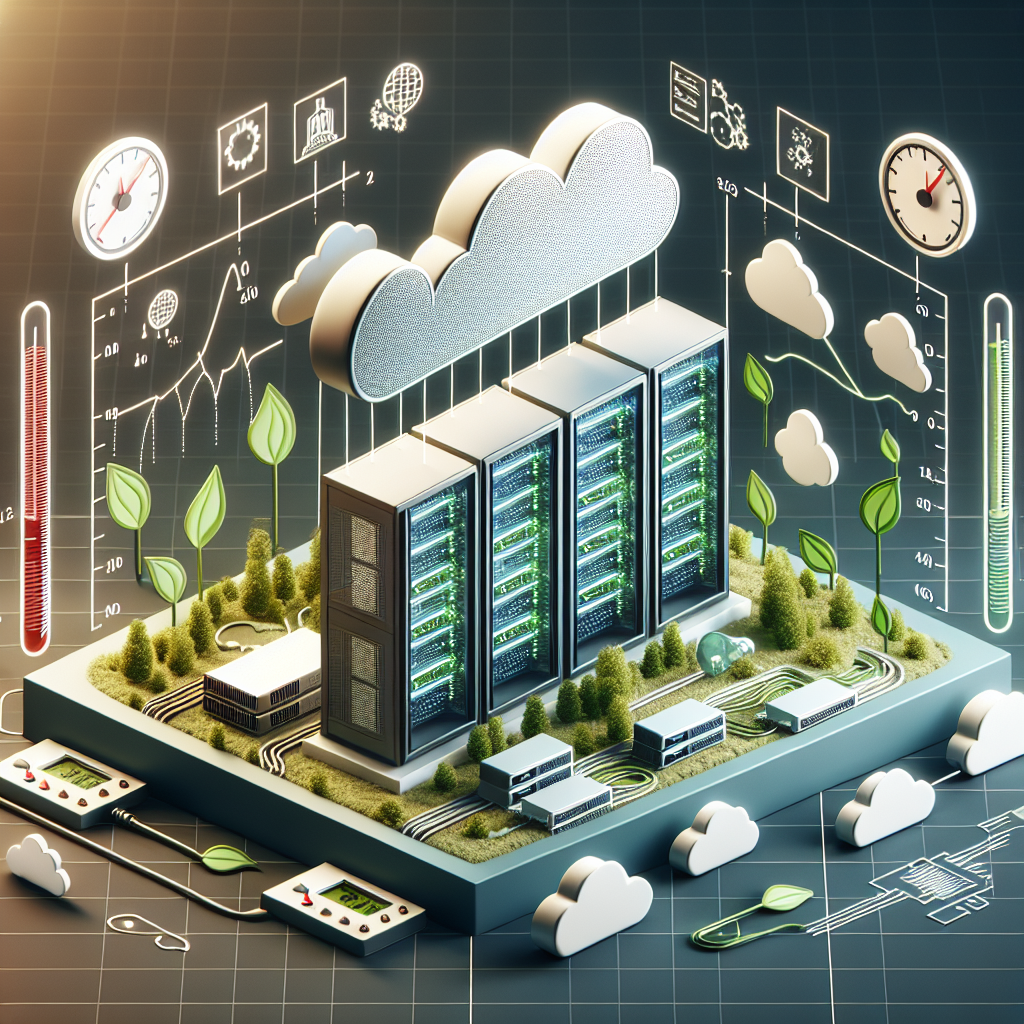
Measuring and Managing Carbon Footprint in Data Centers for Environmental Sustainability
In today’s digital age, data centers play a crucial role in storing, processing, and transmitting vast amounts of information. However, the energy consumption of these facilities is a growing concern due to their significant carbon footprint. As the demand for data continues to rise, it is essential for data centers to measure and manage their carbon footprint for environmental sustainability.Measuring the carbon footprint of a data center involves calculating the amount of greenhouse gas emissions generated by its operations. This includes emissions from electricity consumption, cooling systems, and equipment manufacturing. By understanding the carbon footprint of a data center, organizations can identify areas for improvement and implement strategies to reduce emissions.
One common method for measuring carbon footprint is the use of carbon accounting tools, which track energy consumption and emissions data. These tools provide valuable insights into the environmental impact of data center operations and help organizations make informed decisions on reducing their carbon footprint.
Managing the carbon footprint of a data center involves implementing strategies to reduce energy consumption and emissions. This can include investing in energy-efficient technologies, optimizing cooling systems, and using renewable energy sources. By taking proactive steps to reduce their carbon footprint, data centers can not only contribute to environmental sustainability but also save on energy costs.
One innovative approach to managing carbon footprint in data centers is the use of carbon offsetting. This involves investing in projects that reduce greenhouse gas emissions, such as renewable energy or reforestation initiatives, to balance out the emissions generated by the data center. Carbon offsetting can help data centers achieve carbon neutrality and demonstrate their commitment to environmental sustainability.
Overall, measuring and managing carbon footprint in data centers is essential for reducing their environmental impact and promoting sustainability. By implementing energy-efficient practices, investing in renewable energy sources, and engaging in carbon offsetting, data centers can play a significant role in mitigating climate change and protecting the environment for future generations.
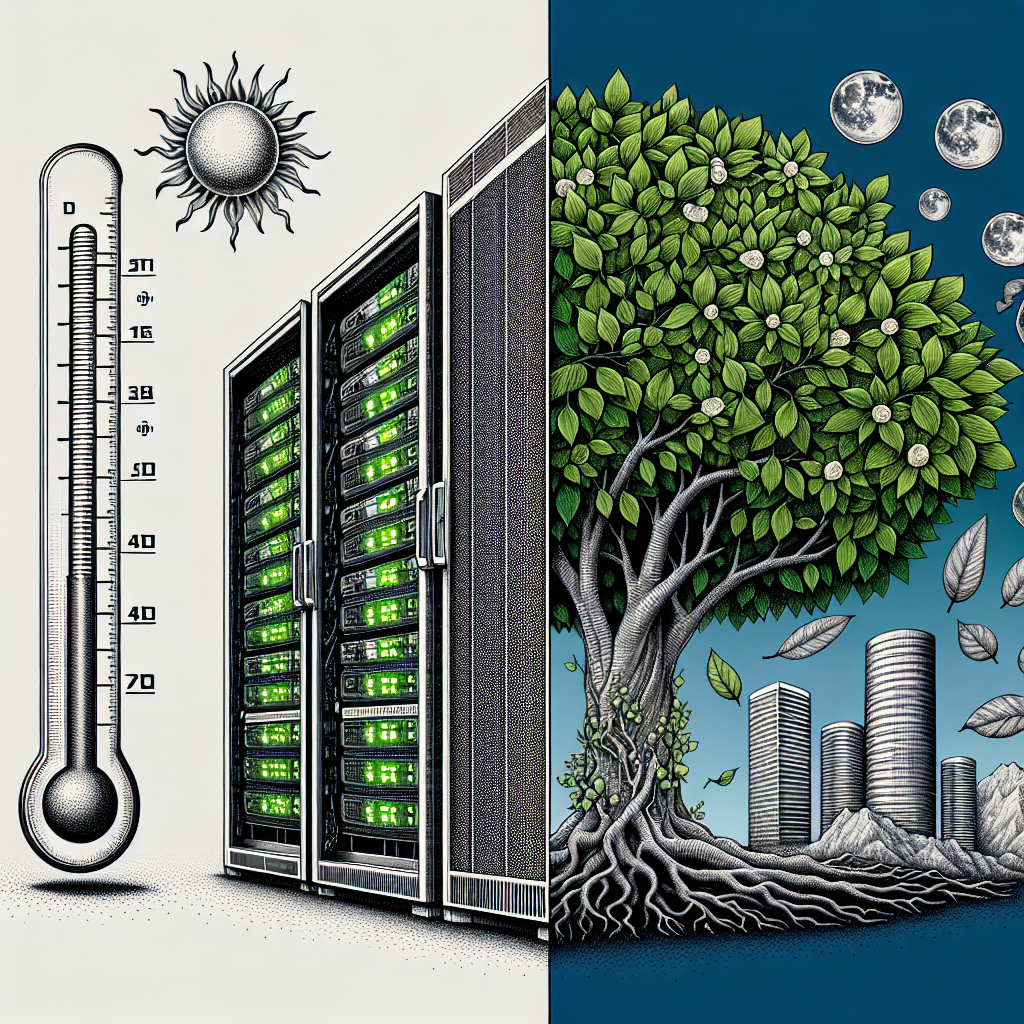
The Impact of Data Center Cooling on Environmental Sustainability: How to Reduce Your Carbon Footprint
As technology continues to advance and data usage increases, the demand for data centers also grows. Data centers are essential for storing, processing, and managing vast amounts of digital information. However, these facilities consume a significant amount of energy, leading to concerns about their impact on the environment.One of the biggest challenges for data centers is cooling. The servers and equipment housed in these facilities generate heat, which can quickly build up and cause equipment to malfunction. In order to prevent this, data centers must be kept at a constant temperature, requiring the use of cooling systems. These systems consume a large amount of energy, contributing to the carbon footprint of data centers.
The environmental impact of data center cooling is significant. According to a report by the Natural Resources Defense Council, data centers in the United States alone consumed an estimated 91 billion kilowatt-hours of electricity in 2013. This is equivalent to the annual electricity usage of all the households in New York City.
To address this issue and reduce the carbon footprint of data centers, there are several strategies that can be implemented:
1. Implementing energy-efficient cooling systems: Investing in energy-efficient cooling systems, such as air-side economizers or liquid cooling systems, can help reduce the energy consumption of data centers. These systems are designed to optimize cooling efficiency and reduce the amount of electricity needed to maintain the desired temperature.
2. Utilizing free cooling: Free cooling, also known as air-side economization, takes advantage of cool outdoor air to help cool data centers. By bringing in fresh air from outside, data centers can reduce their reliance on mechanical cooling systems, saving energy and reducing their carbon footprint.
3. Optimizing airflow management: Proper airflow management is essential for maintaining the temperature and humidity levels in data centers. By optimizing the layout of servers and equipment, as well as implementing hot and cold aisle containment systems, data centers can improve cooling efficiency and reduce energy consumption.
4. Monitoring and managing energy usage: Implementing energy monitoring and management systems can help data centers track their energy usage and identify areas where energy conservation measures can be implemented. By regularly monitoring and analyzing energy data, data centers can optimize their cooling systems and reduce their carbon footprint.
Overall, the impact of data center cooling on environmental sustainability is a significant concern. By implementing energy-efficient cooling systems, utilizing free cooling, optimizing airflow management, and monitoring energy usage, data centers can reduce their carbon footprint and contribute to a more sustainable future. It is essential for data centers to prioritize environmental sustainability and take proactive measures to reduce their impact on the environment.
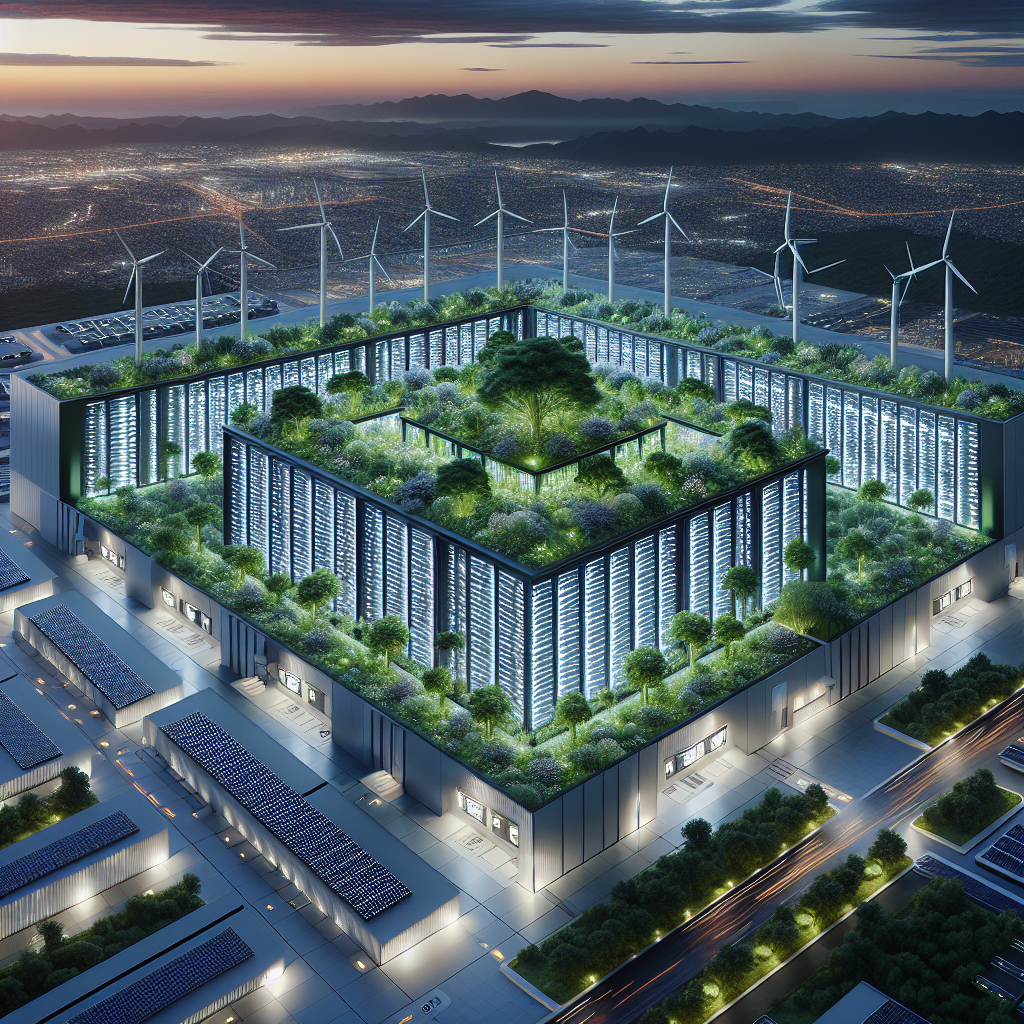
Data Center Sustainability: Best Practices for Reducing Carbon Footprint and Energy Consumption
Data centers are essential for storing and processing vast amounts of data that power our digital world. However, the environmental impact of data centers cannot be overlooked. According to a report by the International Energy Agency, data centers are responsible for approximately 1% of global electricity consumption and are projected to consume even more in the coming years.In order to combat this growing carbon footprint and energy consumption, data center operators are increasingly adopting sustainable practices to reduce their environmental impact. Here are some best practices for reducing carbon footprint and energy consumption in data centers:
1. Virtualization: Virtualization technology allows multiple virtual servers to run on a single physical server, thereby reducing the number of physical servers required and the overall energy consumption. By consolidating servers and optimizing resource utilization, data centers can significantly reduce their energy consumption.
2. Energy-efficient hardware: Investing in energy-efficient servers, storage devices, and networking equipment can help data centers reduce their energy consumption. Energy Star certified equipment can significantly reduce power usage and help data centers meet sustainability goals.
3. Renewable energy: Data centers can reduce their carbon footprint by sourcing renewable energy to power their operations. This can include installing solar panels, wind turbines, or purchasing renewable energy credits to offset their electricity consumption from fossil fuels.
4. Data center design: Building data centers with energy-efficient design features such as hot and cold aisle containment, efficient cooling systems, and energy-efficient lighting can help reduce energy consumption. Proper airflow management and temperature control can also help optimize energy usage.
5. Energy monitoring and management: Implementing energy monitoring and management systems can help data centers track and optimize their energy usage. By monitoring energy consumption in real-time, data center operators can identify areas for improvement and implement energy-saving measures.
6. Sustainable practices: Implementing sustainable practices such as recycling e-waste, using energy-efficient cooling systems, and reducing water usage can help data centers reduce their environmental impact. Data centers can also participate in green certification programs to demonstrate their commitment to sustainability.
7. Collaborate with cloud providers: Leveraging cloud services can help data centers reduce their energy consumption by offloading workloads to more energy-efficient cloud providers. Cloud providers often have more energy-efficient infrastructure and can help data centers reduce their carbon footprint.
By implementing these best practices, data centers can reduce their carbon footprint and energy consumption, while also improving their overall sustainability. As the demand for data continues to grow, it is essential for data center operators to prioritize sustainability and adopt environmentally friendly practices to minimize their impact on the planet.
